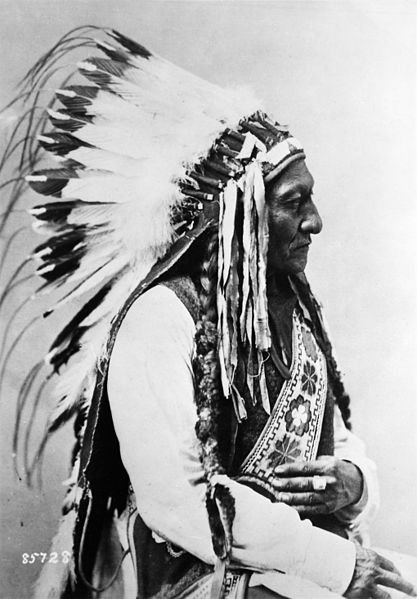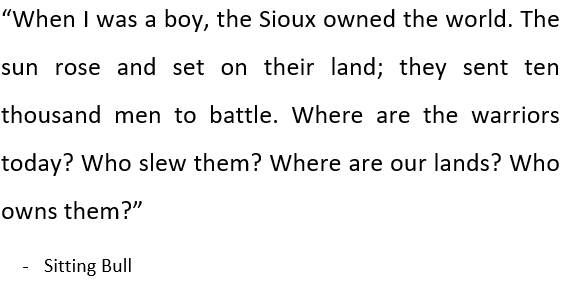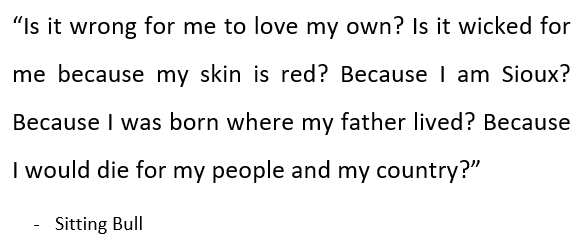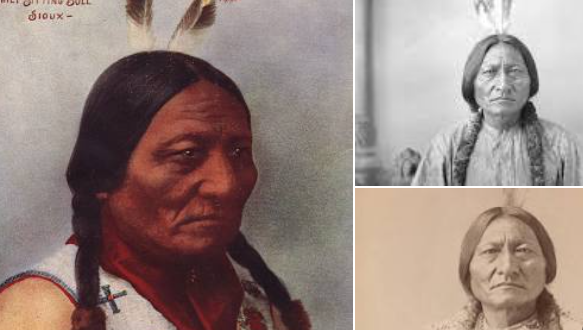Sitting Bull: History, Battle of the Little Bighorn, Significance, & Death

Sitting Bull: History, Battle of the Little Bighorn, Significance, & Death
To the American government, Sitting Bull was a troublesome and disrespectful person who had grown to become a pain in the neck. But to the native Lakota tribe, he was a great and caring leader who had the welfare of the people at heart. A native of the Hunkpapa Lakota society, Sitting Bull would be remembered for uniting and leading the various Sioux tribes to fight against the white man, i.e. the United States government.
It is said that he fought in his first battle at the age of 14 when he, alongside his father and other members of the military, raided the camp of the Crow tribe. It was during this period that he showcased his bravery and leadership skills which he would be noted for in years to come.
Before he was murdered in 1890, Sitting Bull led his tribe into many wars, most famous among them the Battle of the Little Bighorn in 1876, in which he was victorious against Colonel George Custer’s of the U.S. Army. Their success in the aforementioned battle established him as one of the greatest leaders of the Sioux tribe, and perhaps one of the greatest Native Americans of all time.
On the other side, his numerous conflicts with the American governments and his refusal to accept their demands made him an “enemy of the country”.
In the article below, World History Edu takes an in-depth look at the life of this great Native American as well as how he led his people in a fierce battle against the United States Army. You might also like to read on to find out how he was killed and other interesting information about this Native American leader.
Birth and tribe
We know him as Sitting Bull, but that wasn’t his name at birth. The future war hero was initially christened ‘Ȟoká Psíče’, which translates into English as Jumping Badger.
He was also affectionately referred to as ‘Húŋkešni’, which means Slow in English.
Like many Native Americans during that period, historians have found it very difficult to identify Sitting Bull’s exact date of birth. It is widely believed that he came into this world around 1831. His parents were Her-Holy-Door and Jumping Bull. His father, Jumping Bull, is believed to have been the one who gave him the name “Slow” due to how meticulous he was as a child.

Nicknamed “Slow”, Sitting Bull was born at a place called Many-Caches. His father gave him the name “Slow” due to how meticulous he was as a child.
How he earned the name Sitting Bull
He started showing signs of bravery at an early age when he participated in many games. At the age of ten, he took down his first buffalo which was no mere feat. And four years later, in the company of his uncles and father, he joined an army of Lakota soldiers. Their mission was to attack the Crow tribe and take their horses. Jumping Badger played a pivotal role in this exercise and returned home on one of the seized horses.
During a feast to celebrate their victory, Jumping Bull, his father, honored him with the name ‘Tȟatȟáŋka Íyotake’, which means the “Buffalo Who Sits Down”. This name later became the “Sitting Bull”.
Who are the people of Lakota?
They are a group of American Indians located around present-day South and North Dakota. They are made up of seven subtribes namely the Húŋkpapȟa (Hunkpapa), Oóhenuŋpa (Two Kettles), Sičháŋǧu (Brulé), Itázipčho (Sans Arc), Sihásapa (“Blackfeet”), Mnikȟówožu (Miniconjou) and Oglála (“They Scatter Their Own”). The Lakotas are one of the two main groups of the Sioux people.

Right from an early age, he showed his prowess in horse ridding and hunting. He grew up wanting nothing than to be a fierce warrior as his father and his father before him was. For his heroism in the battle, his father honored him with the name Sitting Bull. Image: Sitting Bull and his family – Rear L–R: Good Feather Woman (sister), Walks Looking (daughter); Front L–R: Her Holy Door (mother), Sitting Bull, Many Horses (daughter) with her son, Courting a Woman.
Battle with the United States government
In July 1864, the U.S. Army, led by Brigadier General Alfred Sully, attacked the people of Dakota in an attempt to drive the indigenes out of their lands. However, the American force was met by a number of fierce local warriors led by Inkpaduta (Red End), Gall, and the man himself, Sitting Bull. Despite their resistance, the Dakotas and the Lakotas were forced to vacate their lands.

Sitting Bull and his forces also locked horns with U.S. forces again in 1864 at the Battle of Killdeer Mountain. Once again, the Sioux were forced to retreat after one of their trading villages was surrounded by the U.S. forces, led by Brig. Gen. Alfred Sully.
Despite their defeats, Sitting Bull and his people never gave up. They occasionally attacked American forces, resulting in a number of battles, including the Red Cloud’s War in 1866, and the Battle of the Badland in August 1864. In both battles, the U.S. emerged victorious.
Perhaps the biggest confrontation between Sitting Bull’s Sioux forces and the United States happened in 1876. Historians often term it as the Great Sioux War.
What was the Great Sioux War about?
After the Fort Laramie Treaty in 1868, the Siouxs were made owners of the Black Hills, which is located in South Dakota. However, when gold was discovered in the region in 1874, the American government decided to take over the land. The U.S. government tried to forcefully relocate the Natives to the Sioux Reservation. This idea was not welcomed by the Sioux people who were determined to defend their territories at all cost.
Sitting Bull saw those reservations as prisons. He vowed to never back down in his effort to halt the advancement of the U.S. government into Native American territories. As much as he tried to resolve the issue in a peaceful manner, he found out that the United States was bent on seizing more and more of his tribe’s resource-rich lands. Therefore, the Native American warrior-chief was left with no other option but to arm his men and wage a brutal war against the United States.

Right from an early age, he showed his prowess in horse ridding and hunting. He grew up wanting nothing than to be a fierce warrior as his father and his father before him was.
The United States government, in 1874, sent a Lieutenant Colonel George Armstrong Custer-led army to the Black Hills to examine the place. Aside from the government, other groups, especially miners, were also attracted to the region due to the discovery of precious minerals.
The following year, a Sioux delegation went to President Ulysses S. Grant in Washington, D.C. to plead with him to take his troops out of their land. However, the two parties were not able to reach a peaceful decision.
With no peaceful solution to the problem, war broke out between the United States army and a combined army of Native Americans of mainly the Cheyenne, Arapaho, and the Lakota Sioux. The Great Sioux War began in 1876 and lasted for a year. It also included the infamous Battle of the Little Bighorn in late June of that year.
Read More: Most Remarkable Accomplishments of Ulysses S. Grant
Who won the Battle of the Little Bighorn?

The Battle of Little Bighorn by American painter Charles Marion Russell
Many historians have sighted this battle as the highlight of the Great Sioux War. It was also the event that etched Sitting Bull’s name into the annals of history.
On the 25th of June 1876, U.S. Army Lieutenant Colonel Custer led over 550 troops of the 7th Cavalry Regiment to the Little Bighorn Valley which is located in Southern Montana.
Upon their arrival, Custer divided his troops into three groups and stationed them at different locations. Though the plan looked like a great one at the initial stages, it has been described as one of the worst decisions in the history of the U.S. army.
Custer’s group was scheduled to attack from the north. But after having a peep into the camp of the native Indians, he realized that his army was light in numbers. He then called for reinforcement from the other groups. At this stage, the Indians had drawn a perfect plan to counter the U.S. army.

The U.S. Army suffered a humiliating defeat at the Battle of the Little Bighorn in 1876. The Native Americans were led by Sitting Bull, a Lakota warrior-chief. Image: U.S. Army Colonel George Custer
Led by a resolute and brave warrior-chief in the person of Crazy Horse (c. 1841-1877), the Native Americans successfully surrounded Custer and his troops. It was all one-way traffic from then onward, as the Native Americans decimated Custer’s forces. By the time the dust had settled, over 200 U.S. soldiers, including Lieutenant Colonel Custer, had been killed.
It is for the above reason that the battle is sometimes called “Custer’s Last Stand”.
Ultimately the Battle of the Little Bighorn ended in a victory for the Arapaho, Lakota Sioux, and Northern Cheyenne armies. Sitting Bull played an instrumental role during the battle as he led women and children to safety.
Read More: 10 Greatest Native American Leaders of All Time
Sitting Bull on the run
The deaths of so many American forces made Sitting Bull and his people an enemy of the federal government. The news of the death of Custer wasn’t taken lightly by the U.S. government. Months after the battle, the War Department assigned thousands of military personnel to the region.
The soldiers constantly attacked the Lakotas and forced the local people to surrender. Though many of the tribes gave up, a stubborn and resolute Sitting Bull decided not to follow that trend. He probably thought that succumbing to the demands of the American government might bring an end to his tribe.
For that reason, he led a number of his people to somewhere in the North-West Territories of Canada in 1877. It is believed that his stay in the country caused some form of tension between the United States and Canadian governments
He returned to the United States four years later after encountering many problems, including hunger and disease. He and his family surrendered to the U.S. government upon entering the country. The former warrior was taken into custody and spent two years as a prisoner in Fort Randall in South Dakota.

For his heroism in the battle, his father honored him with the name Sitting Bull.
Working as an entertainer
Sitting Bull’s role in the Battle of the Little Bighorns made him very popular in the United States. After he was released from prison in 1883, the Lakota leader moved to Standing Rock Reservation and went into showbiz. He earned money by charging for autographs and photographs. He went on tour across the United States and Canada.
Later, he met another famous person in the showbiz industry named William Frederick Cody, famously known as “Buffalo Bill”. He convinced Sitting Bull to join his “Buffalo Bill’s Wild West” events. It’s said that he appeared on the show for many months and was paid around $50 every week.

It is said that he killed his first buffalo at the age of 10. And by age 14, he had already made an appearance in fierce battle, where the Sioux fought against the Crow tribe. In that battle, he even brought down an opponent. Image: Sitting Bull – quotes
How he was murdered
Sitting Bull left Buffalo Bill and returned to his native Standing Rock Agency. Despite his long absence, he was still seen as the spiritual and military leader in his people.
During the later part of the 1880s, the Ghost Dance movement became very popular among the Native Americans. According to Wovoka (1856 – 1932), a religious leader of Paiute, the dance could reunite the spirit of the ancestors and the living to fight for peace and defend their land.

In a skirmish with police officers, Sitting Bull, along with seven of his men, were shot dead on December 15, 1890. Image: Sitting Bull’s grave at Fort Yates, North Dakotac. 1906
With the fear that Sitting Bull might join the dance movement, Indian agent James McLaughlin ordered for his arrest. On 15th December 1890, over 30 police officers surrounded his house. He was later arrested. His refusal to sit on their horses started a conflict. It was during the melee that he was shot in the chest by Lieutenant Henry Bullhead. He died on the spot. The Lakota warrior-chief was buried at Fort Yates in North Dakota.
However, about a century later, his family reinterred him at a place near Mobridge, South Dakota.

In 1953, his remains were exhumed from Fort Yates and reinterred near Mobridge, South Dakota. Image: Monument at Sitting Bull’s grave, Mobridge, South Dakota
Sitting Bull: Fast Facts

Sitting Bull was the famed warrior-chief of the Lakota Sioux Indians who fought fiercely against U.S. forces at the Battle of Little Bighorn.
Name at birth: Jumping Badger
Born: c. 1831
Place of birth: Grand River, South Dakota
Died: December 15, 1890; Grand River, South Dakota, U.S.
Father: Jumping Bull
Mother: Her-Holy-Door
Spouses: Scarlet Woman, Seen-by-her-Nation, Snow-on-Her, Four-Robes-Woman, Light Hair
Children: Crow Foot, Many Horses, Standing Holy, Lodge in Sight, William Sitting Bull
Stepson: John Sitting Bull (also known as Refuses-them)
Nickname: Slow
Most famous: Securing victory against the U.S. at the Battle of Little Bighorn

Sitting Bull vehemently opposed having any peace treaty with the U.S., people he considered invaders.
Did you know…?
- Though he was famously known as a soldier, Sitting Bull was also regarded as a spiritual leader who could make accurate prophecies. It was believed that in one of his visions, he saw U.S. forces fall like grasshoppers from the sky.
- He met renowned American sharpshooter Annie Oakley in Minnesota and later took her as his adopted child in 1884. He gave her the nickname “Little Sure Shot”.
- Sitting Bull was also friends with fellow Native American warrior and leader Crazy Horse. Known as Cha-O-Ha (which translates to “Among the Trees”) and the Oglala Lakota warrior, Crazy Horse led over 2500 warriors to victory against the US Army at the Battle of the Little Bighorn.
- He was married five times and had five children, including Crow Foot and William Sitting Bull. He also raised a step-son named John Sitting Bull.

Sitting Bull developed a close bond with Annie Oakley, the famed American sharpshooter. Image: American sharpshooter Annie Oakley
























